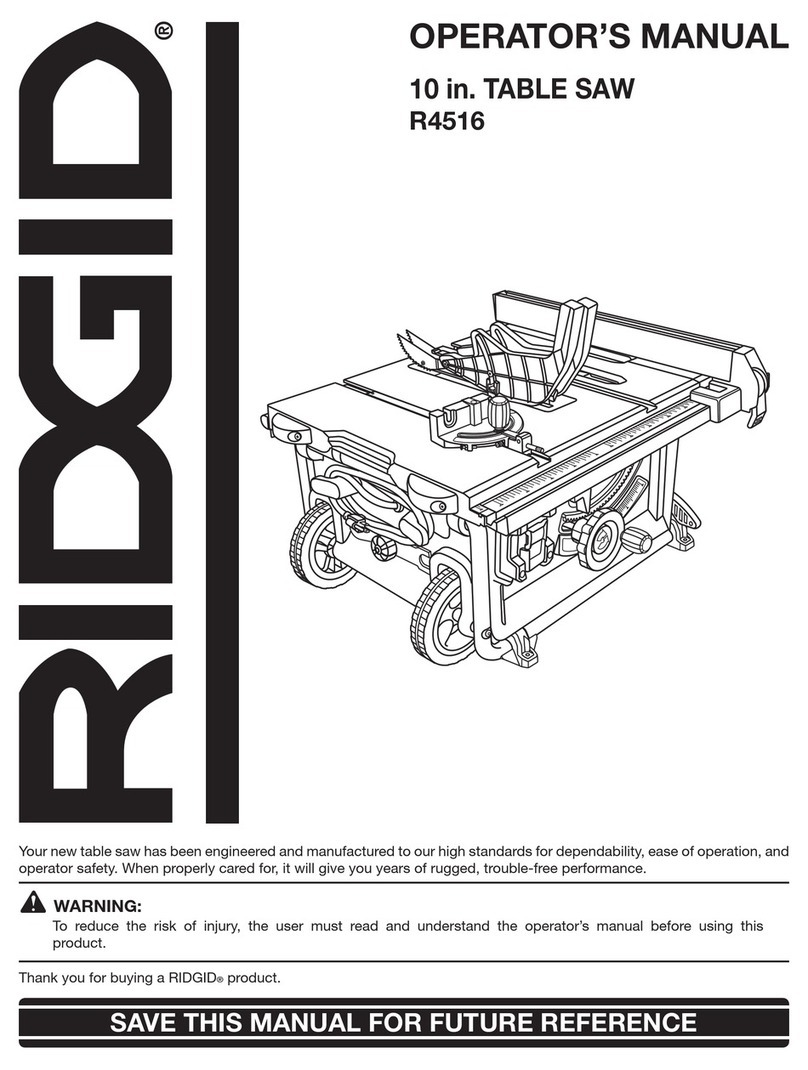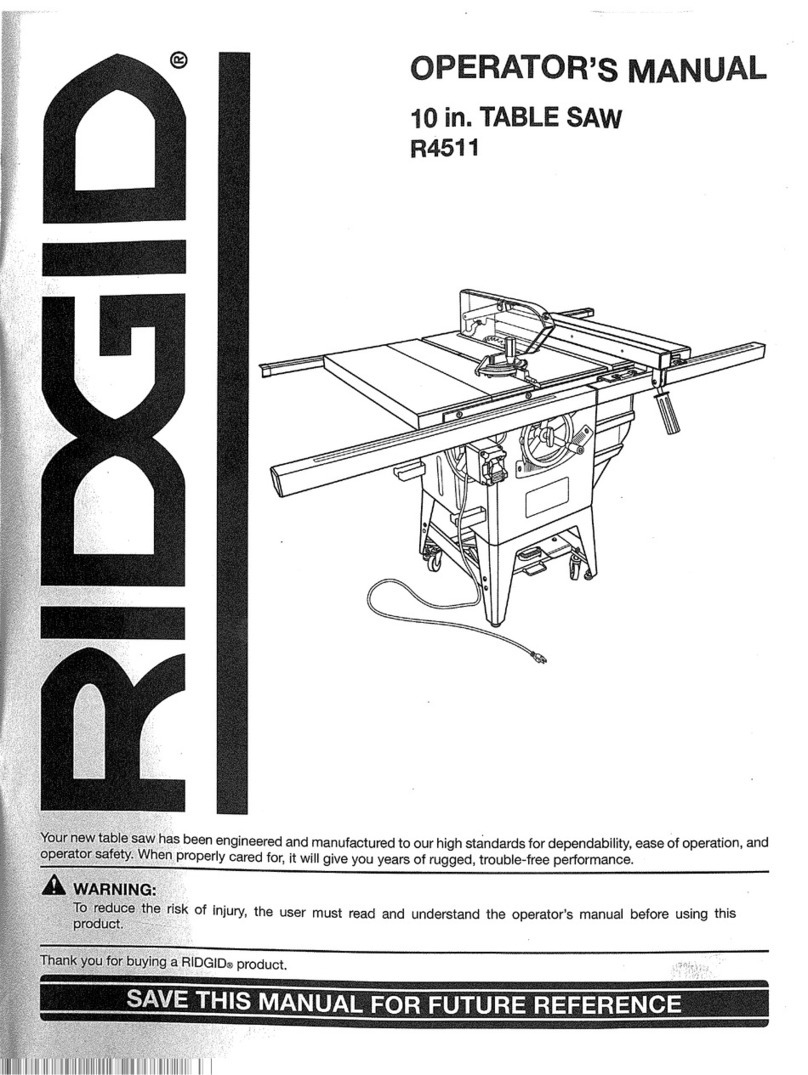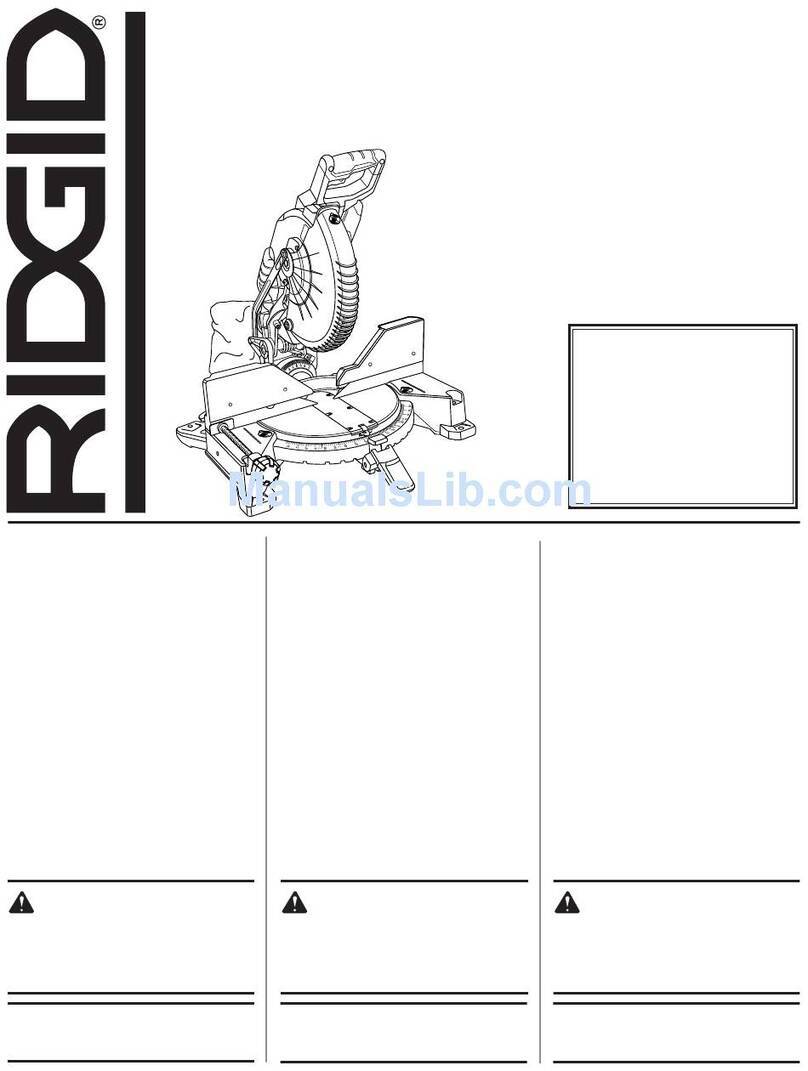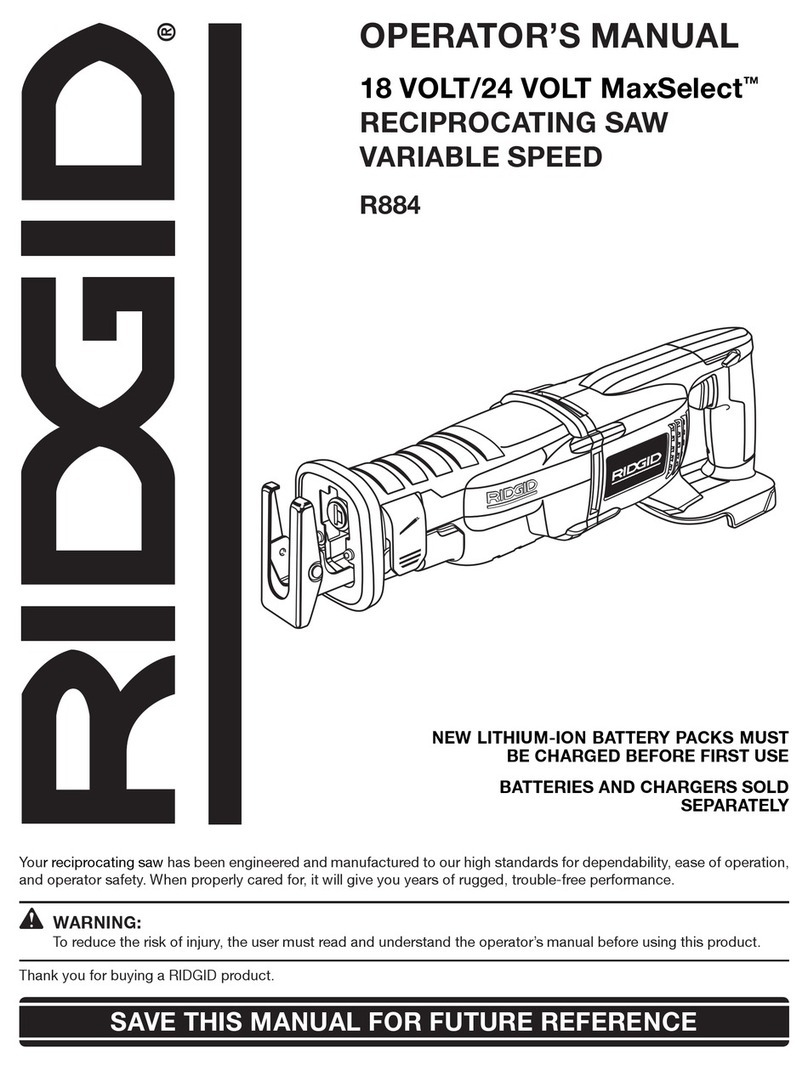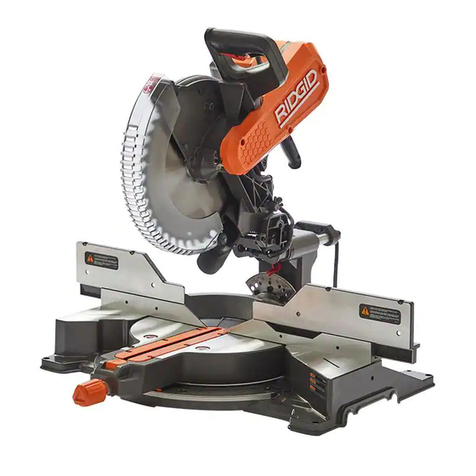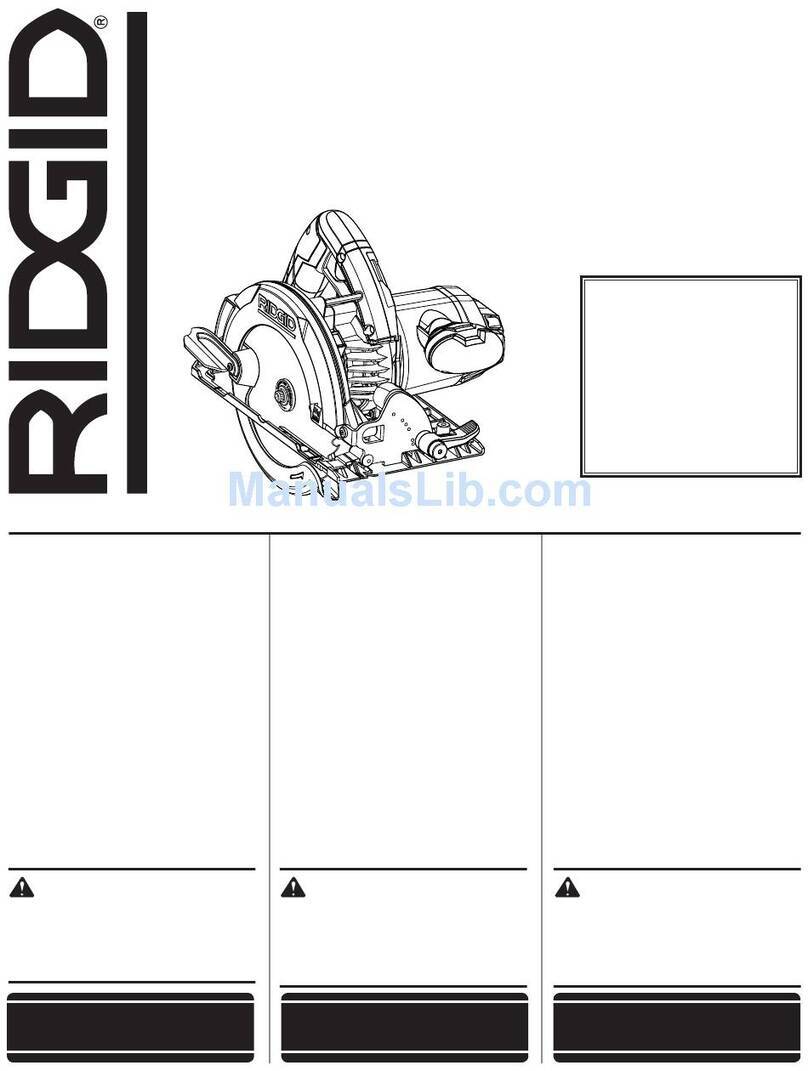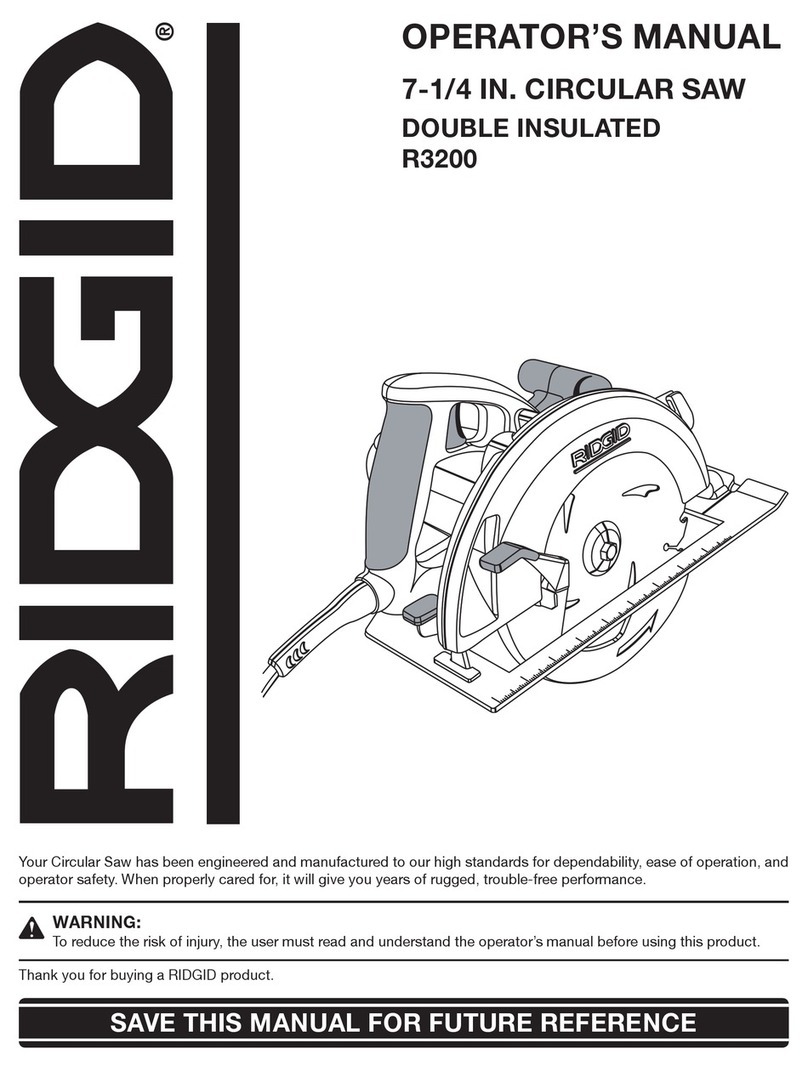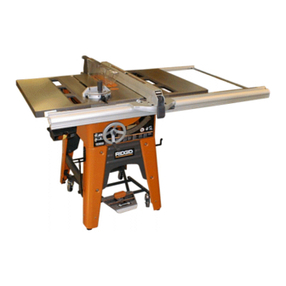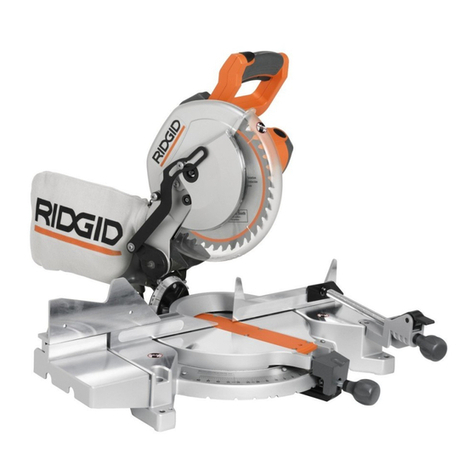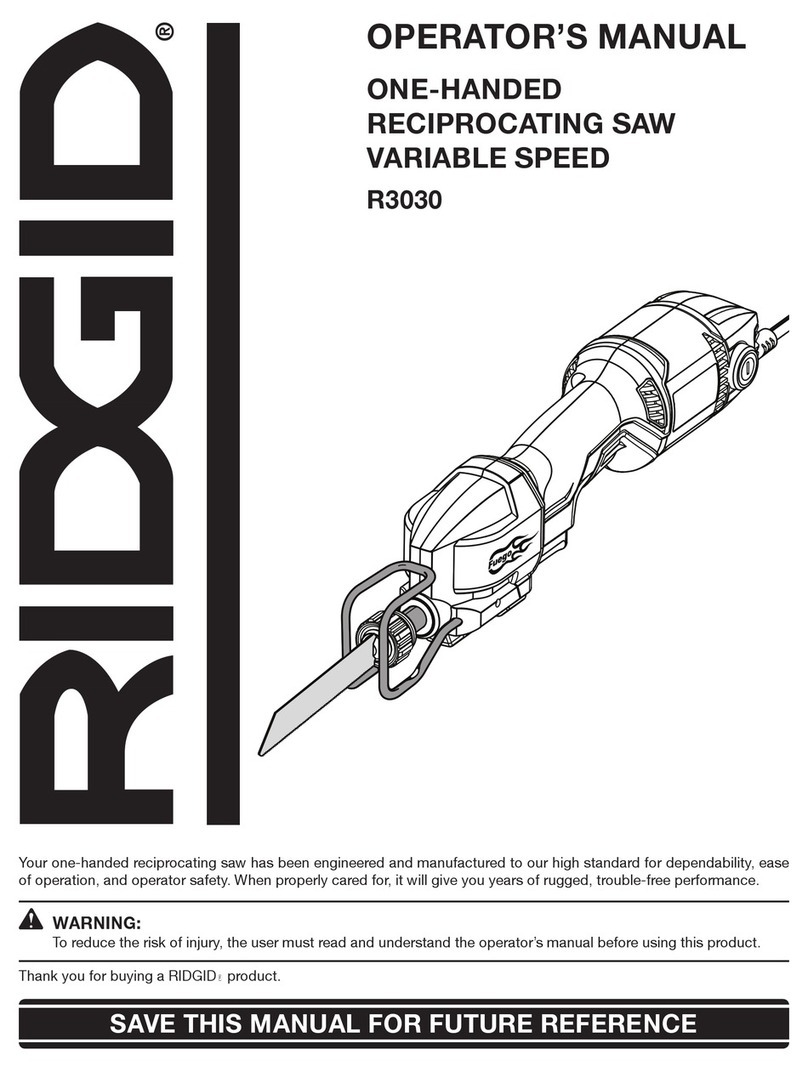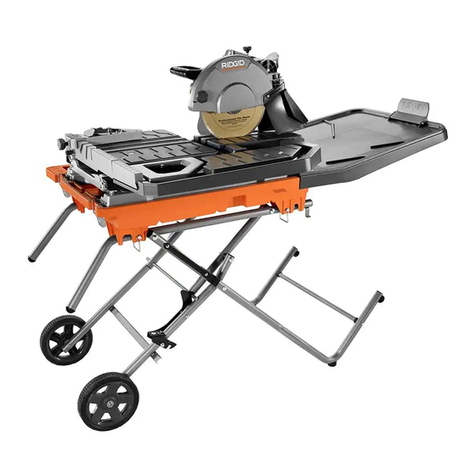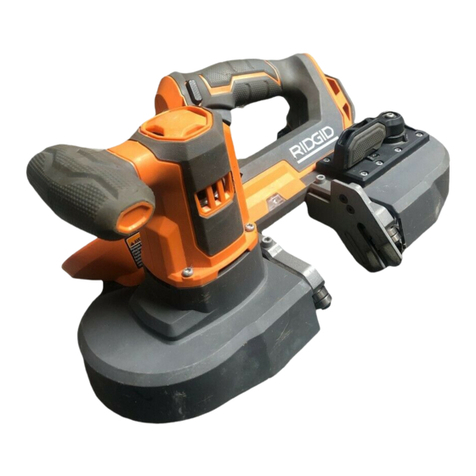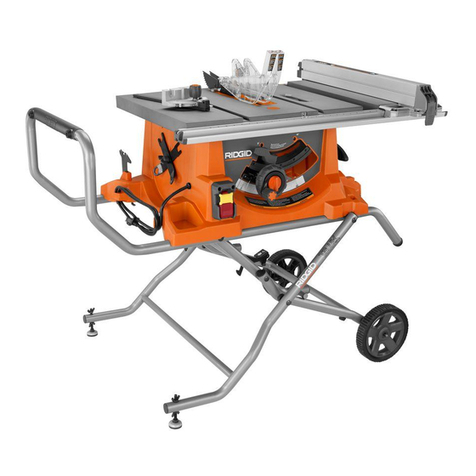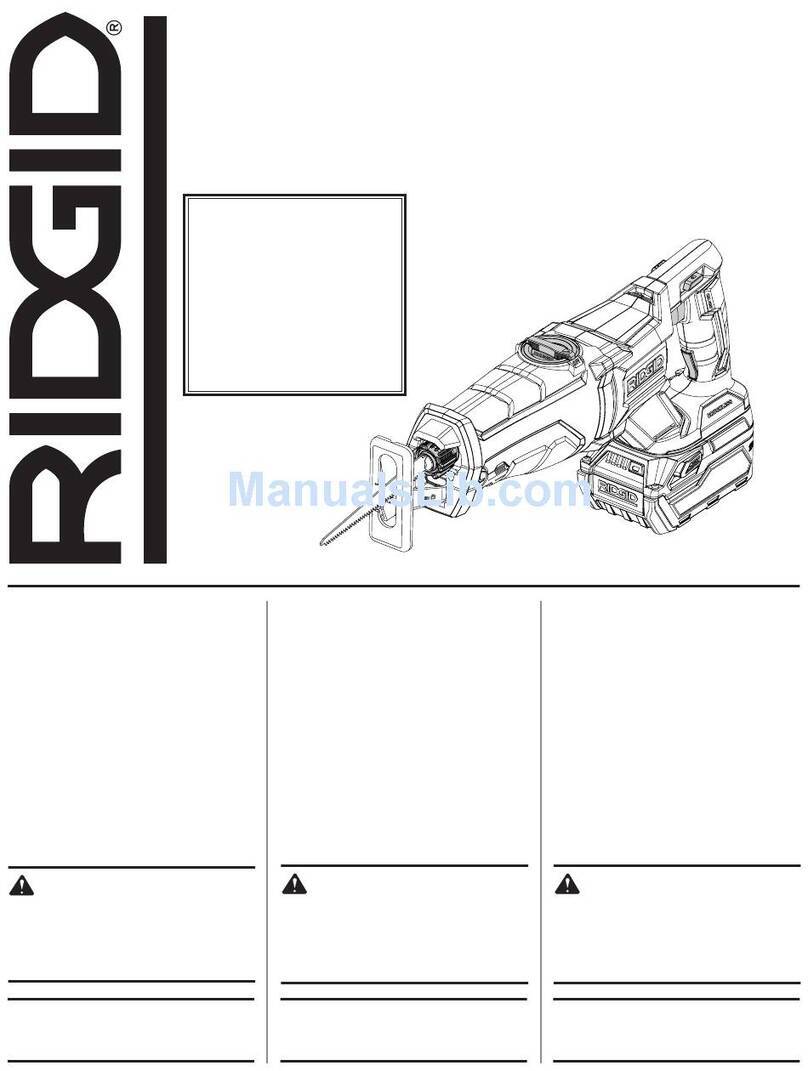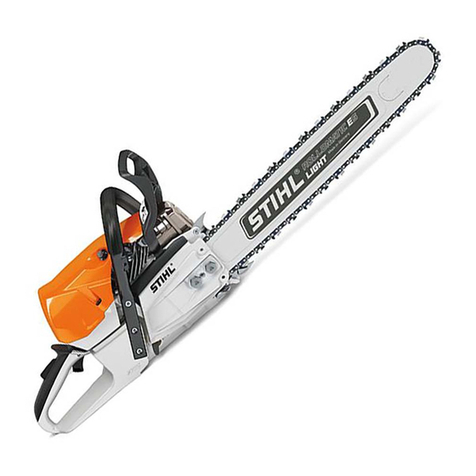4
Safety Instructions for Miter Saws (continued)
Before Each Use
Inspect your miter saw.
Disconnect The Miter Saw. To reduce the risk of injury
from accidental starting, unplug the saw, before changing
the setup, changing the blade or adjusting anything.
Compare the direction of rotation arrow on the guard to
the direction arrow on the blade. The blade teeth should
always point downward at the front of the saw.
Tighten the arbor screw.
Tighten the cover plate stop screw.
Check For Damaged Parts. Check for:
• Proper Alignment of moving parts,
• Damaged electric cords,
• Binding of moving parts,
• Broken parts,
• Stable mounting,
• Function of arm return spring and lower guard: Push
the arm all the way down, then let it rise up until it stops
by itself. Check the lower guard to see if it closed fully.
If it did not, follow the instructions in the Trouble Shoot-
ing section.
• Other conditions that may affect the way the miter saw
works.
If any part of this miter saw is missing, bent, or broken in
any way, or any electrical parts don't work, turn the saw
off and unplug it. Replace damaged, missing, or failed
parts before using the saw again.
Keep Guards In Place, in working order, and in proper
adjustment.
Maintain Tools With Care. Keep the miter saw clean for
best and safest performance. Follow instructions for lubri-
cating. DON’T put lubricants on the blade while it’s spin-
ning.
Remove Adjusting Keys And Wrenches from tool
before turning it on.
To Reduce the Risk of Injury From Jams, Slips Or Thrown Pieces
• Use Only Recommended Accessories. (See “Acces-
sory” section within.) Consult this Owner’s manual for
recommended accessories. Follow the instructions
that come with the accessories. The use of improper
accessories may cause risk of injury to persons.
• Choose the right 12-inch diameter blade for the mate-
rial and the type of cutting you plan to do.
• Make sure the blade is sharp, undamaged and prop-
erly aligned. With the saw unplugged, push the power-
head all the way down. Hand spin the blade and check
for clearance.
• Make sure the blade and arbor collars are clean.
• Make sure the collars' recessed sides are facing the
blade.
• Using the 1/4” hex end of combination wrench (sup-
plied) or a 1/2-inch box end wrench, make sure the
arbor screw is firmly tightened.
• Make sure all clamps and locks are tight and there is
no excessive play in any parts.
•Keep Work Area Clean. Cluttered areas and benches
invite accidents. Floor must not be slippery.
To reduce the risk of burns or other fire damage, never
use the saw near flammable liquids, vapors or gases.
Plan Ahead To Protect Your Eyes, Hands, Face and Ears
Know Your Miter Saw. Read and understand the
owner’s manual and labels affixed to the tool. Learn its
applications and limitations as well as the specific poten-
tial hazards peculiar to this tool.
To reduce the risk of injury from accidental contact with
moving parts, don’t do layout, assembly, or setup work on
the miter saw while any parts are moving.
To Reduce the Risk of Accidental Starting. Make sure
switch is “OFF” before plugging miter saw into a power
outlet.
Plan your work.
Use The Right Tool. Don’t force tool or attachment to do
a job it was not designed to do. Use a different tool for
any workpiece that can’t be held in a solidly braced, fixed
position.
CAUTION: This machine is not designed for cutting
ferrous metals (steel, iron and iron based metals).
Use this miter saw to cut only wood, wood like
products or soft metals like aluminum. Other mate-
rial may shatter, bind on the blade, or create other
dangers.
CAUTION: When cutting any metals, sparks or hot
fragments could cause a fire. To reduce the risk of
this, disconnect any dust collecting bag or hose
from the miter saw, and remove all traces of wood
dust from inside dust traps in the miter saw.
• Do not wear loose clothing, gloves, neckties or jewelry
(rings, wrist watches) They can get caught and draw
you into moving parts.
